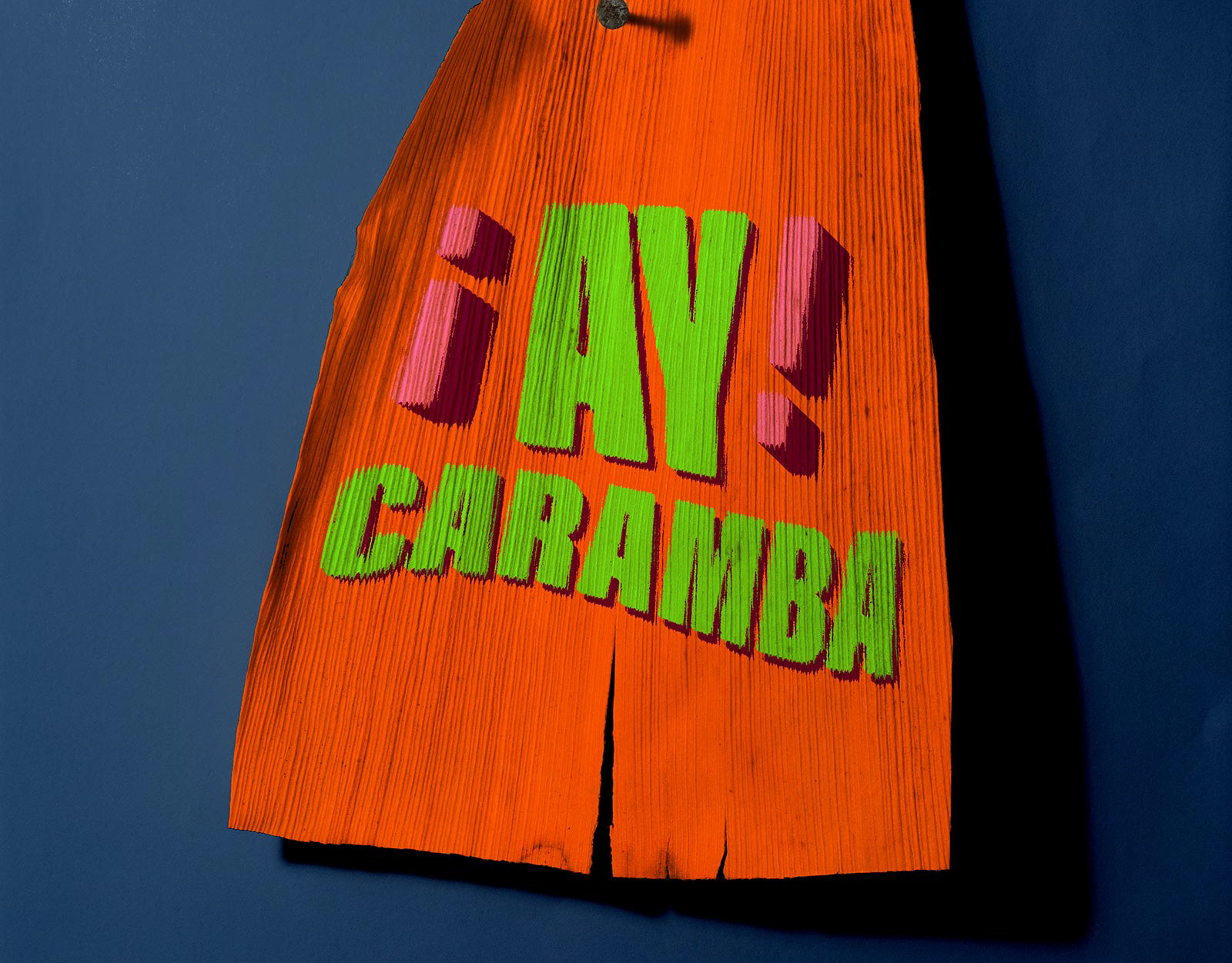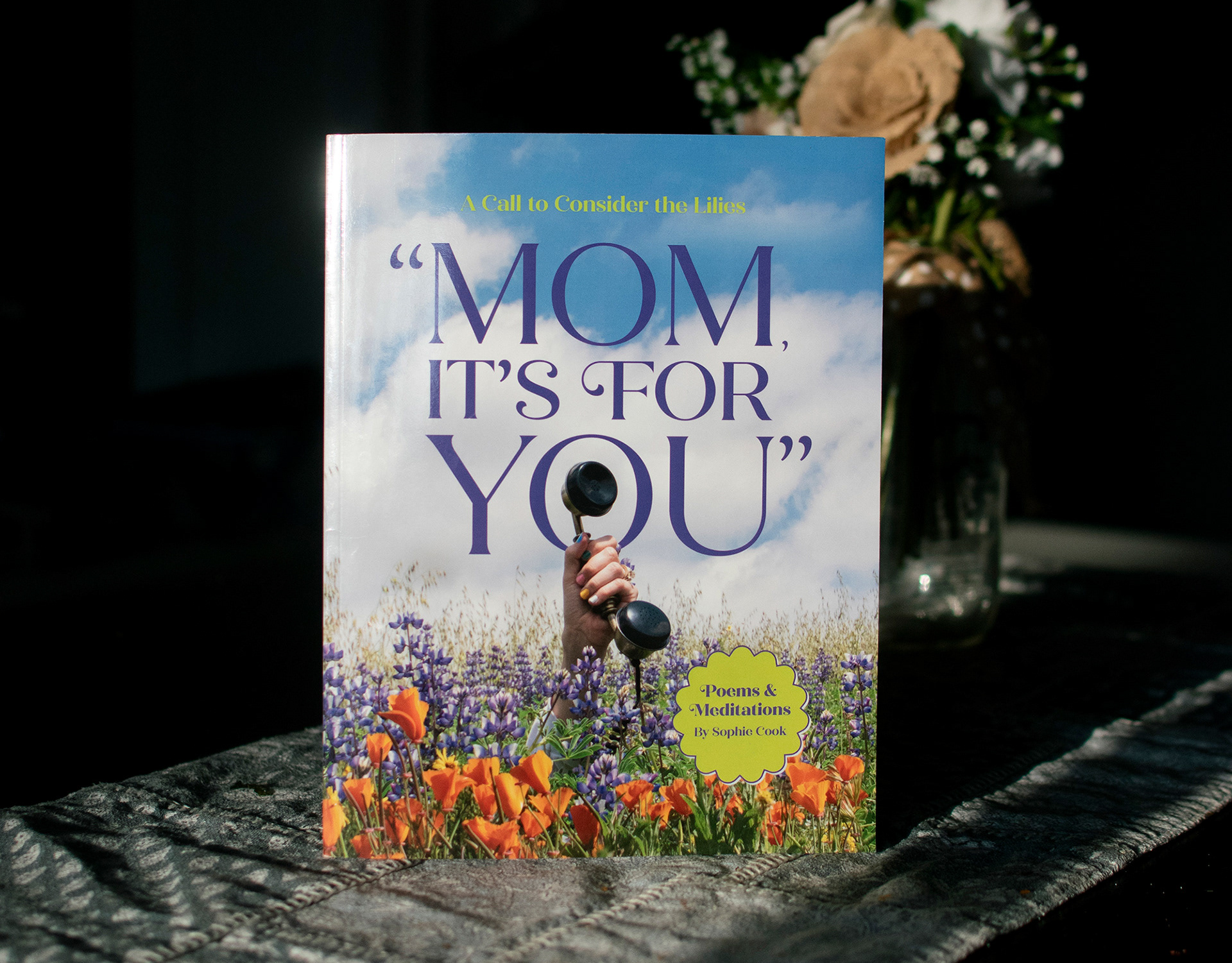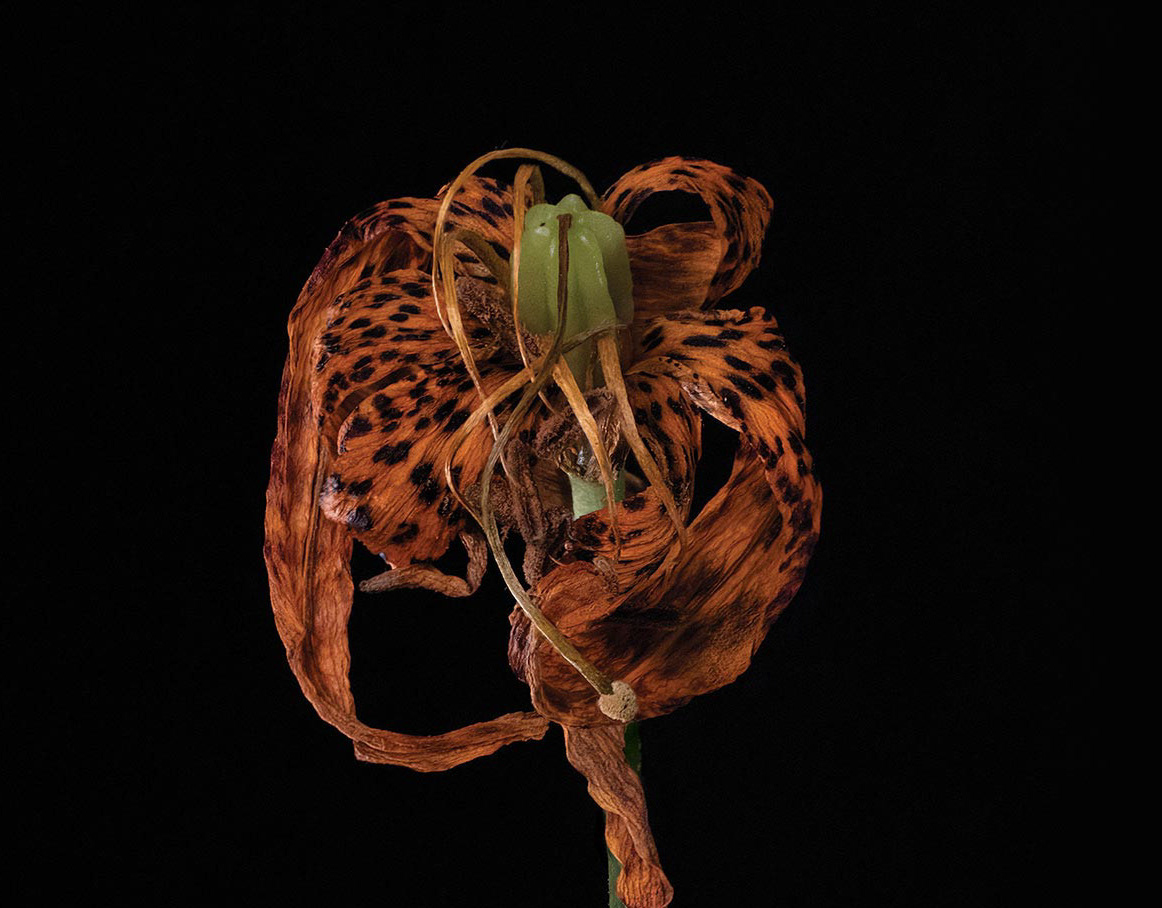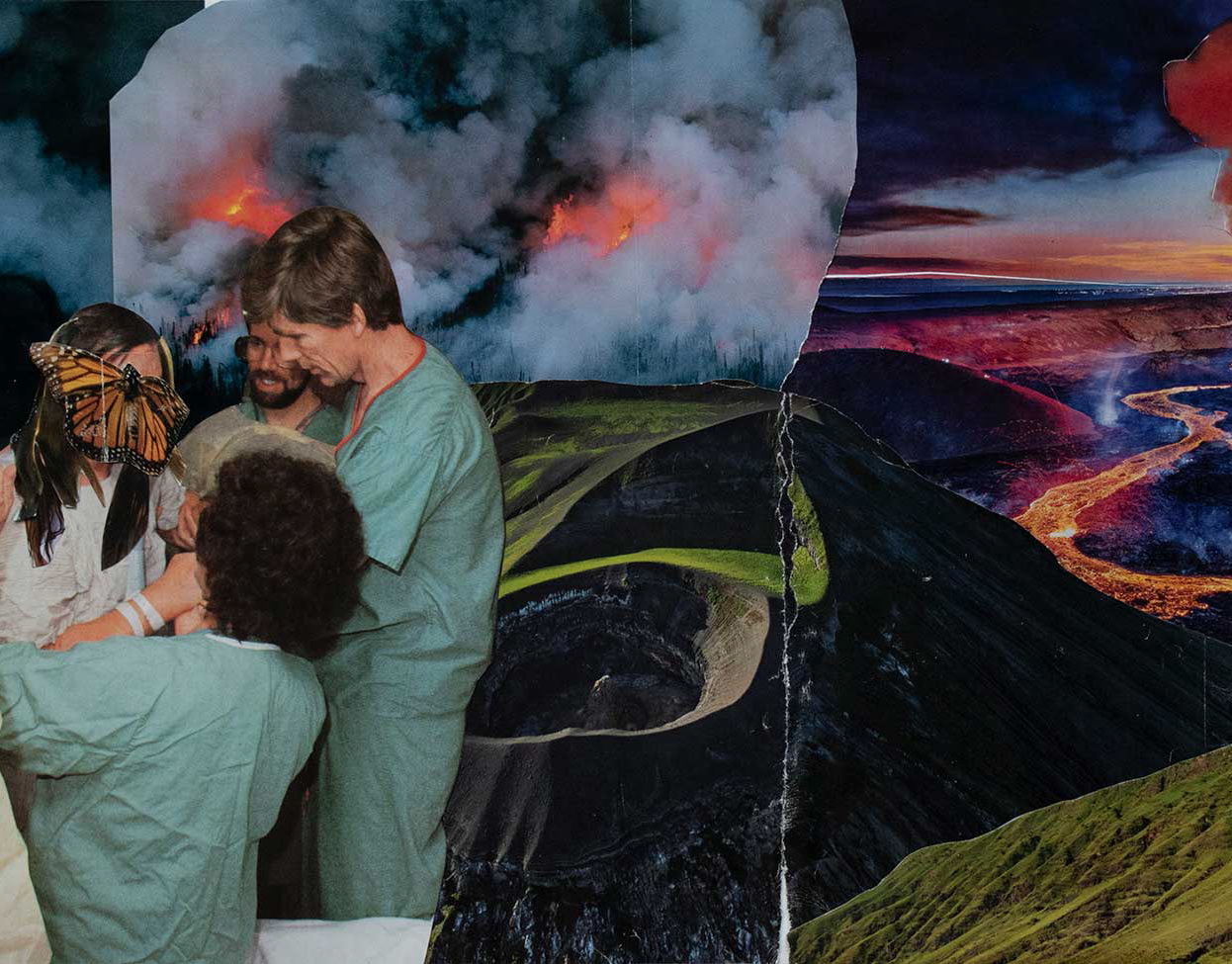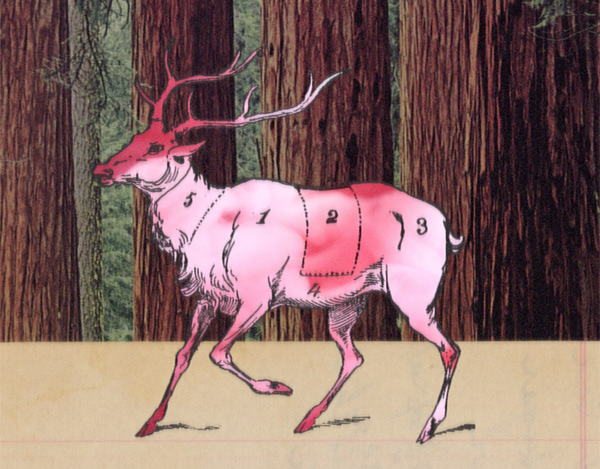Series of macro photographs documenting the ultrabrilliance of Southern California wildflowers. Flower subjects included a Parry's larkspur, elegant clarkia, bush mallow, and wild hyacinth.
Lit with a mixture of ambient and spot lighting, these macro images were captured by attaching a DSLR and reversed 50mm lens to a pair of hand-me-down film bellows. The resulting photographs were then printed on Epson premium glossy photo paper at 24x36" (average size).
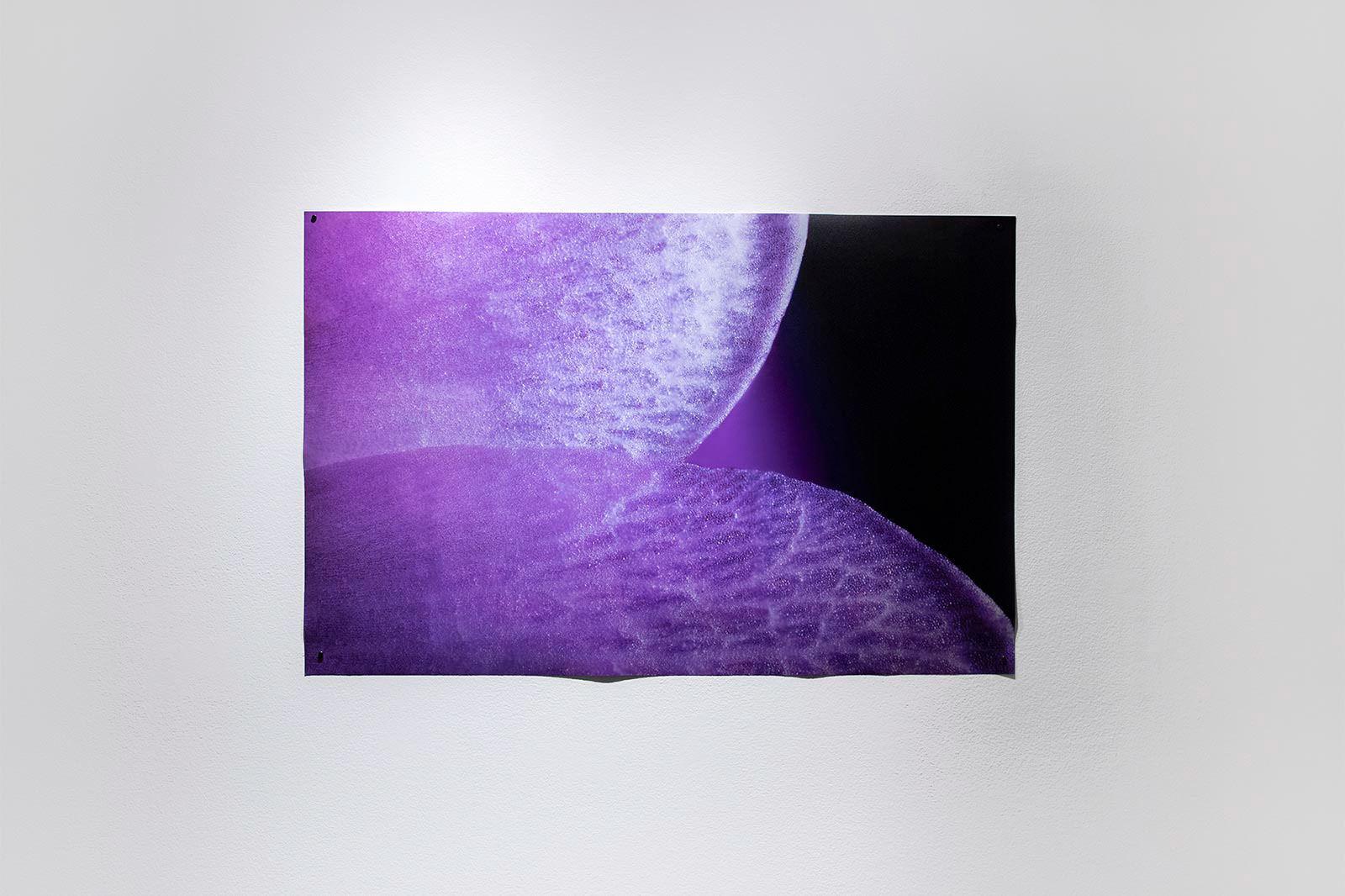
Installation View, "Dainty"

Installation View, "Untitled"

Installation View, "Mother of the Bride"
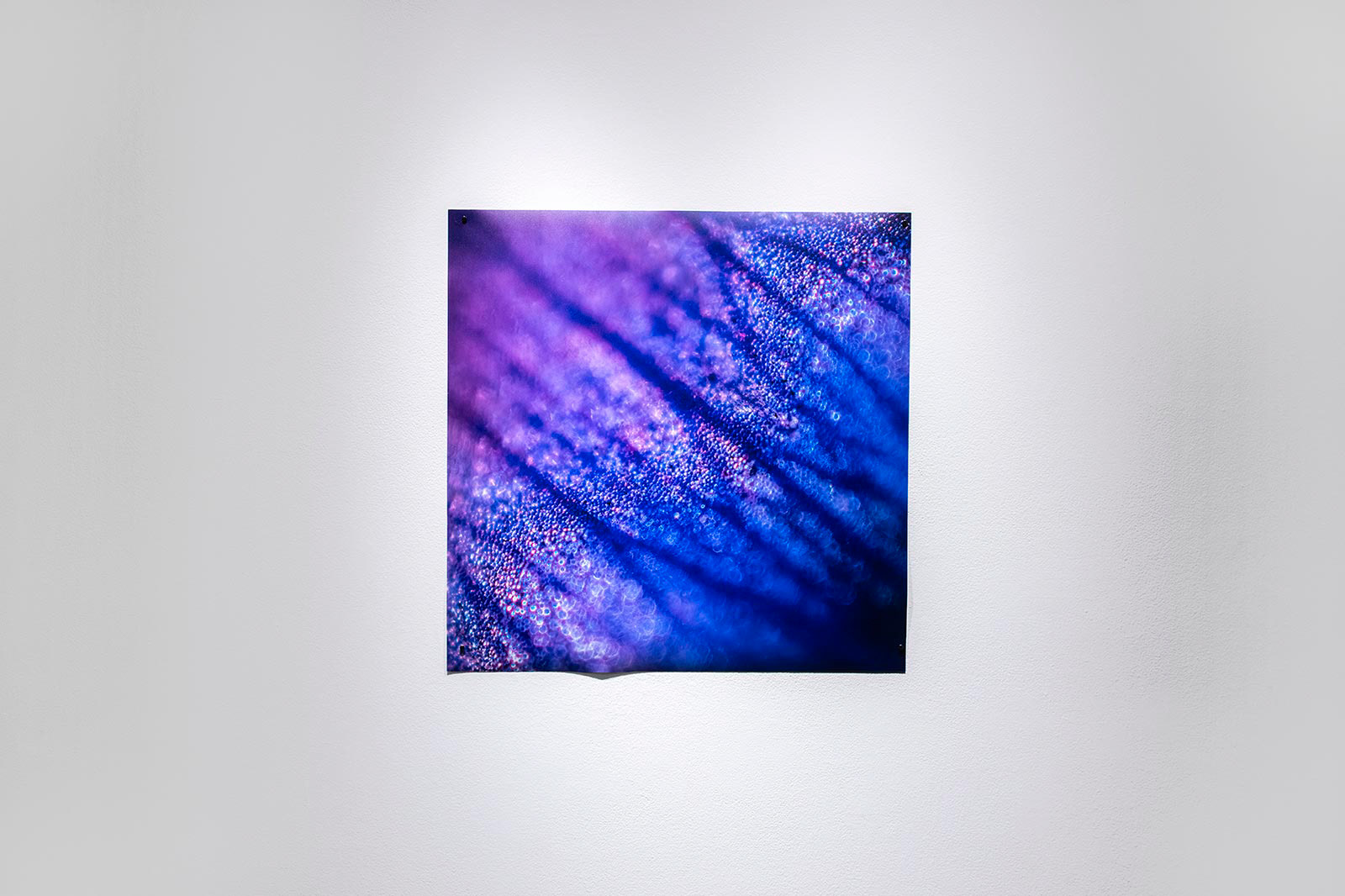
Installation View, "River in Periwinkle"

Installation View, "Ridgeline"
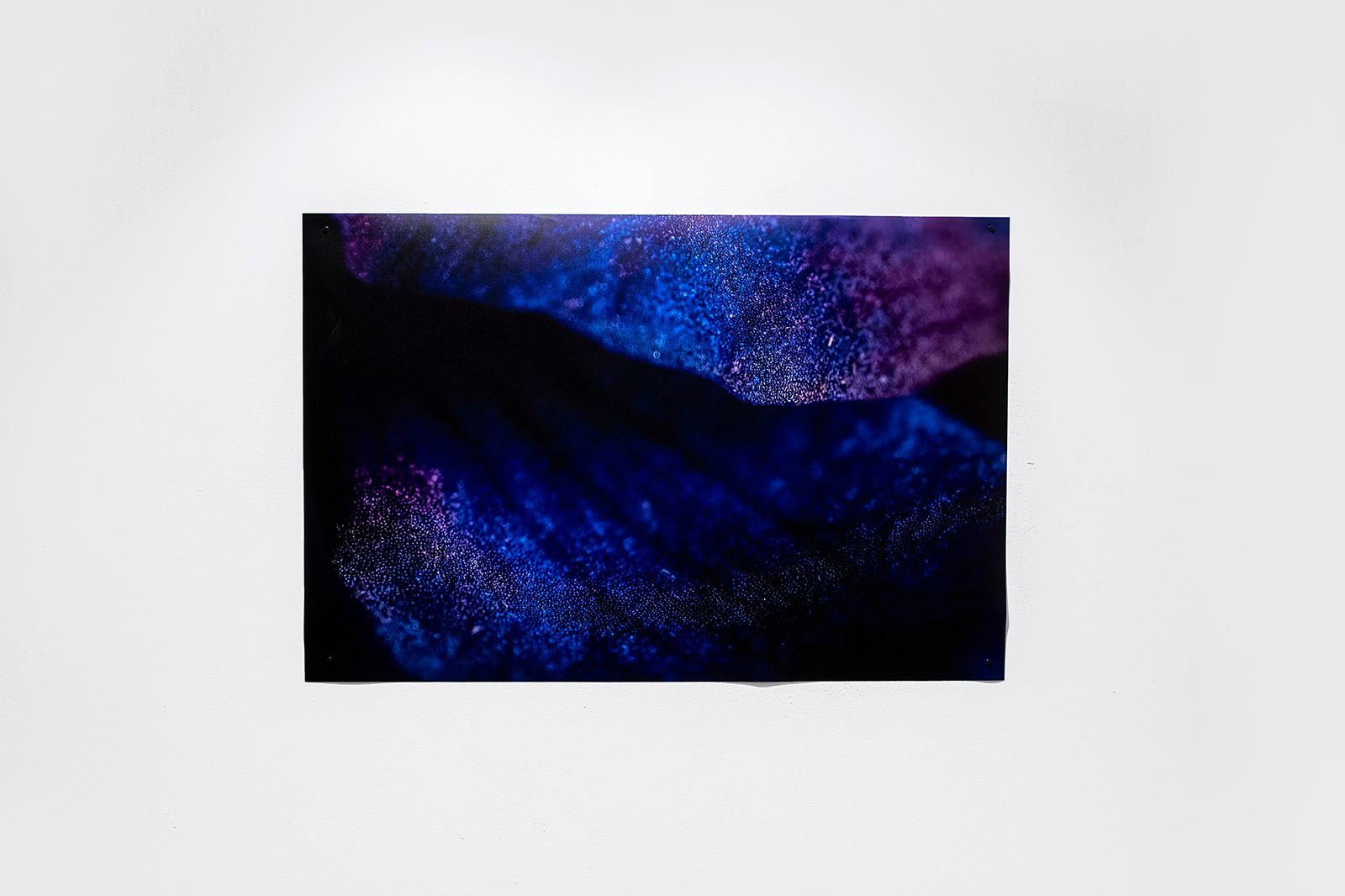
Installation View, "Bespoke in Blue"
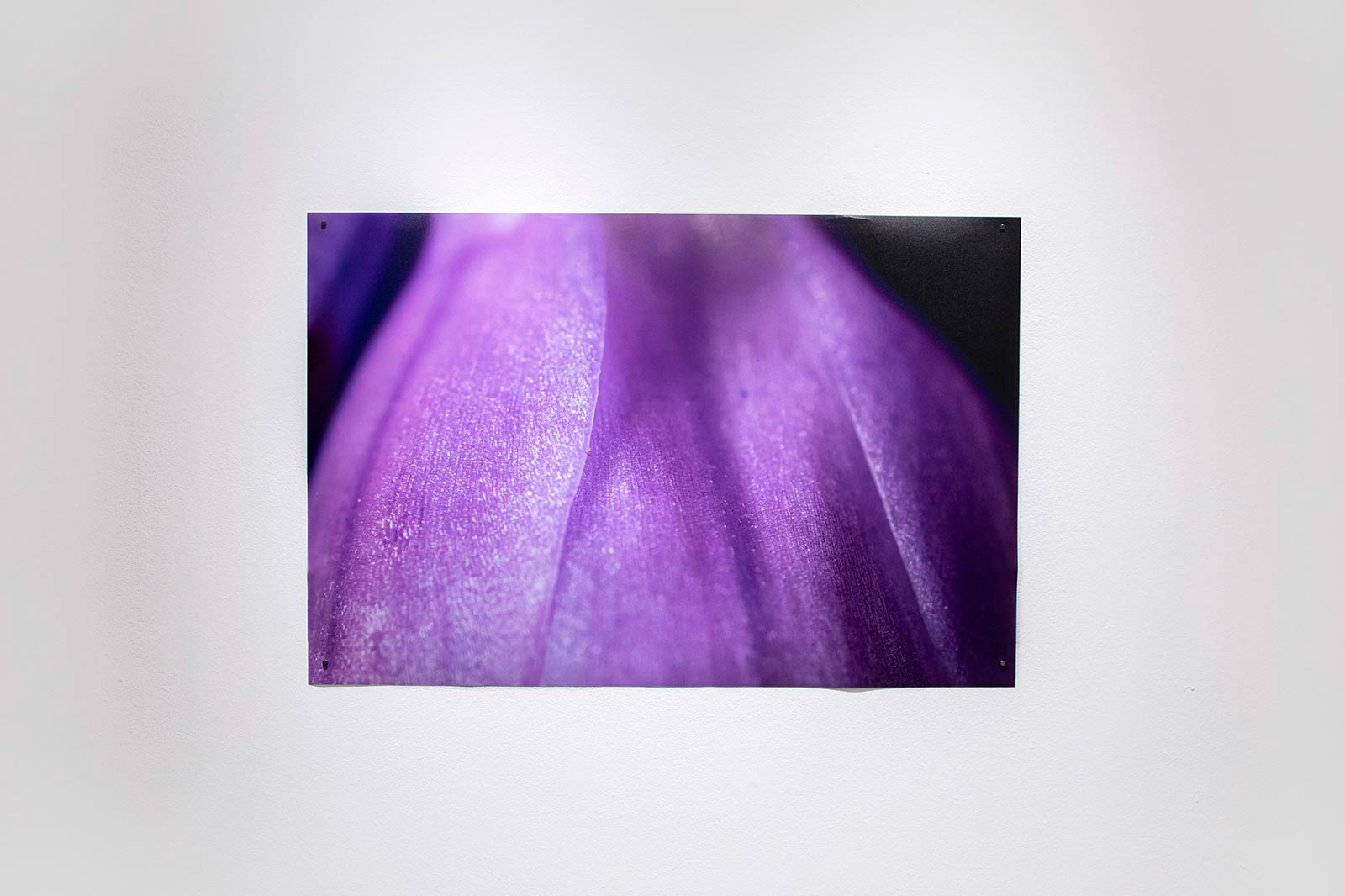
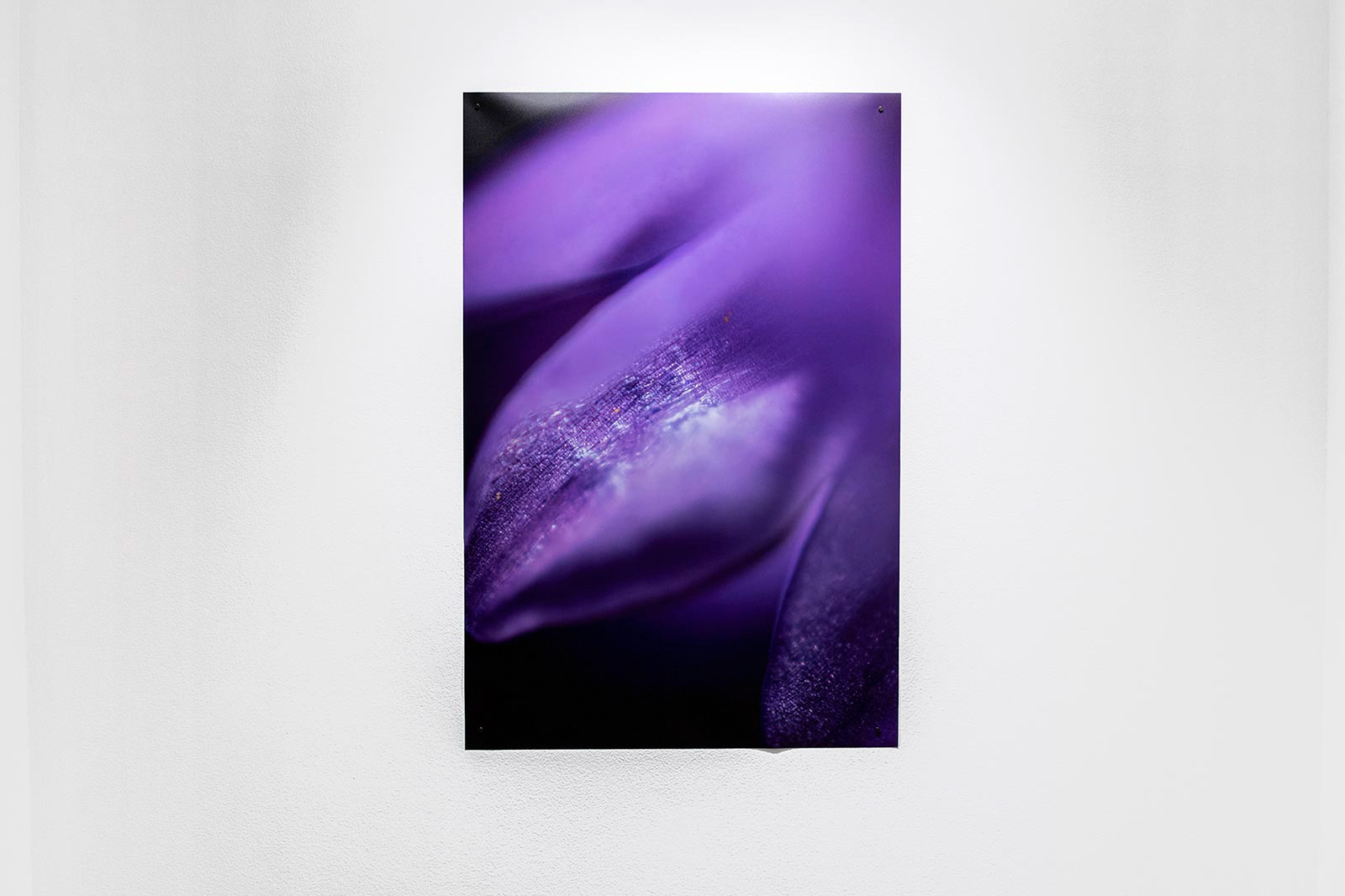
Installation View, "Prom Dress"
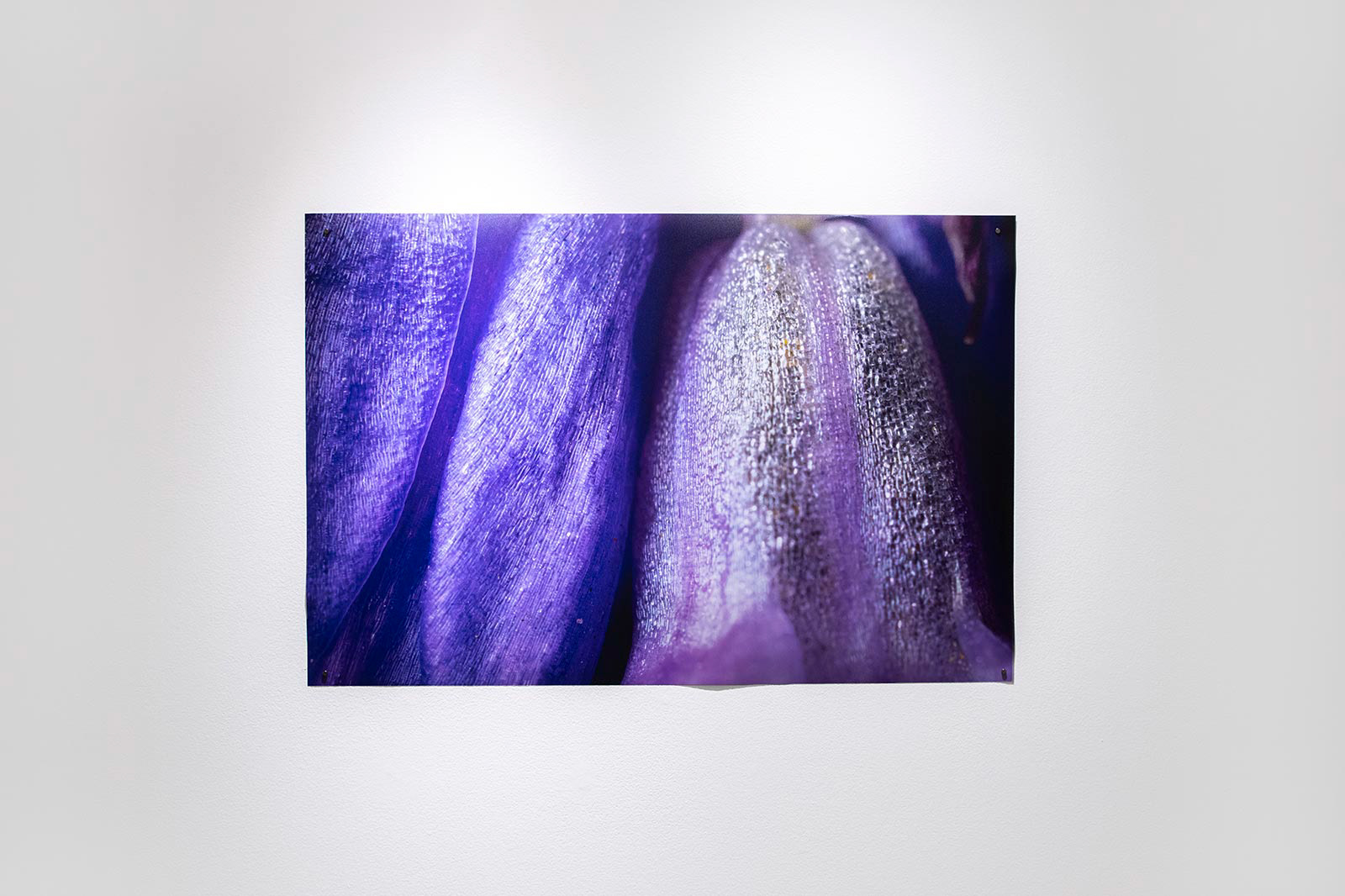
Installation View, "Purple Corduroy with Rhinestones"
Further Reading
“You know everyone misquotes that,” my mother is quick to chide. “The real quote is, ‘God is in the details,’ and it was Michelangelo who said it.”
Anytime that one of us kids rambled offhand that “the devil was in the details,” Mom was quick to instill truth – an involuntary reflex from her newspaper journalism days.
However, a quick Internet search revealed that Michelangelo did not, in fact, say that God was in the details, but most likely German architect Ludwig Mies van der Rohe1 or even painter Gustave Flaubert or art historian Aby Warburg.2 Baffled at how Google had not yet caught up to Doña Maria’s near impeccable veritas track record, I dialed her up and interrogated her.
Unfazed, she replied, “I told you Michelangelo said that? I don’t know who said it! I know the quote is right3, but I don’t know who said it.” But that’s what being a mom is like sometimes. You don’t always get it all right, but oftentimes you get the parts that matter right.
Essentially, all this to say that Consider the Lilies was born from the details. It began when I was gifted a pair of macro photography film bellows from a little old church lady. The bellows were my ticket into seeing the world anew. With a few custom tweaks, I could now photograph objects beyond macro but a step below microscopic.
At the same time, I became enamored with Jesus’ imperative to consider the lilies. In my first outing, I turned this clunky apparatus toward flowers. What I saw in the viewfinder was sublime, otherworldly. Twinkling and shimmering, like music without notes, these flower petals seen at over ten times scale resembled sparkly fabric to me.
When I saw this beautiful world of macro – macro ultra– I knew I had to share it.
However, as I conducted an etymological search for the word ‘lily’ throughout the Scriptures, I was met with mixed results. Some scholars suggested specific lilies, such as the scarlet martagon 4 or Madonna lily 5. Others suggested more common flowers that Jesus could have easily pointed to, such as the anemone coronaria 6 (a poppy-like flower 7), crocus 8, or tulip.9
Then one day, an arts mentor kindly pointed out that I was focused on the wrong term. Instead of ‘lily,’ I should spend my efforts on ‘consider.’ It was only when I turned my gaze to the ethos of the passage, that I was able to make progress.
During this time, I also did find supplementary information that set my mind at ease. In the Arabic version of the text, ‘lilies’ are meant to be understood as flowers in general 9, while additional commentaries further specify that the Arabic word for ‘lily’ alluded to any brightly colored flower 10,11.
With the freedom to follow the spirit of the passage and invaluable new information, my quest to ‘consider’ took me up and down the Southern California coast. I collected and photographed great horned poppies, tiger lilies, California poppies, Parry’s larkspur, elegant clarkias, bush mallows, lupines, and several others over the span of three years, resulting in the handful of photos I present now as a curated set.
As I considered the lilies, I did, in fact, find that God was in the details. His ability to dress these fragile, transitory wildflowers in ultrabrilliant hues and shimmery sequins – details otherwise invisible to the casual observer – caused me to wonder: He who is faithful with little, is He not also faithful with much?
*To my dear mother's credit, later research revealed that Michelangelo may have been the author of “God is in the details.” The 1996 Random House Dictionary of Popular Proverbs and Sayings suggests that the Sistine Chapel painter could have been the first to utter such a statement.3
References:
1. Jan Freeman, "WHOSE DETAILS ARE THEY, ANYWAY: [THIRD EDITION]," Boston Globe, Mar 01, 1998, https://www.proquest.com/newspapers/whose-details-are-they-anyway/docview/405210129/se-2.
2. Bob Ripley, "Attention to Detail always Important," Moose Jaw Times Herald, March 18, 2006, https://www.proquest.com/newspapers/attention-detail-always-important/docview/345410594/se-2.
3.Gregory Titelman, Random House Dictionary of Popular Proverbs and Sayings, (New York: Random House, 1996), accessed June 19, 2023, p.118, https://archive.org/details/isbn_9780679445548/ page/118/mode/2up.
4. Andrew Robert Fausset, M.A., D.D., "Definition for 'lily' Fausset's Bible Dictionary," bible-history.com - Fausset's; 1878, https://bible-history.com/faussets/.
5.“Israel Environment & Nature: Flowers,” Jewish Virtual Library, accessed July 5, 2023, https://www.jewishvirtuallibrary.org/flowers-in-israel.
6. A. Carr, Matthew, The Cambridge Bible for Schools and Colleges, [Cambridge University Press, 1893], Matthew 6:28, https://biblehub.com/commentaries/cambridge/matthew/6.htm
7. Rhetorician, comment on B.C., “What species of flower…?,” Bible Hermeneutics (blog), Stack Exchange.
8. Schuh, February 3, 2016, comment on B.C., “What species of flower might Jesus have been referring to when he said, "Consider the lilies"?,” Bible Hermeneutics (blog), Stack Exchange,
9. Fausset, "Definition for 'lily' Fausset's Bible Dictionary."
10. John Gill, "Commentary on Matthew 6:28", "Gill's Exposition of the Entire Bible", https://www.studylight.org/commentaries/geb/matthew-6.html. 1999.
11. “Matthew 6,” Bible Hub, Pulpit Commentary, accessed July 15, 2023, https://biblehub.com/commentaries/pulpit/matthew/6.htm.

